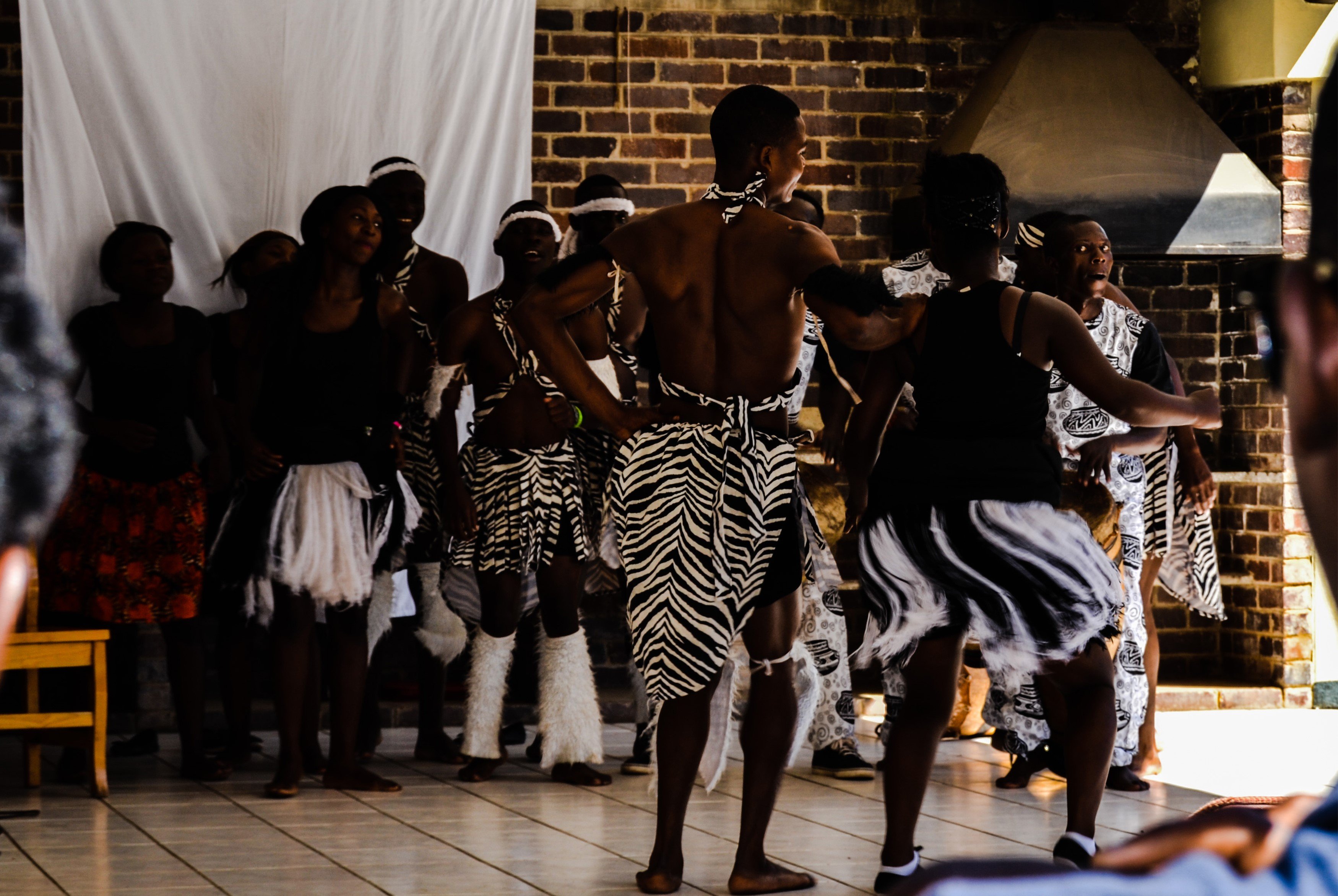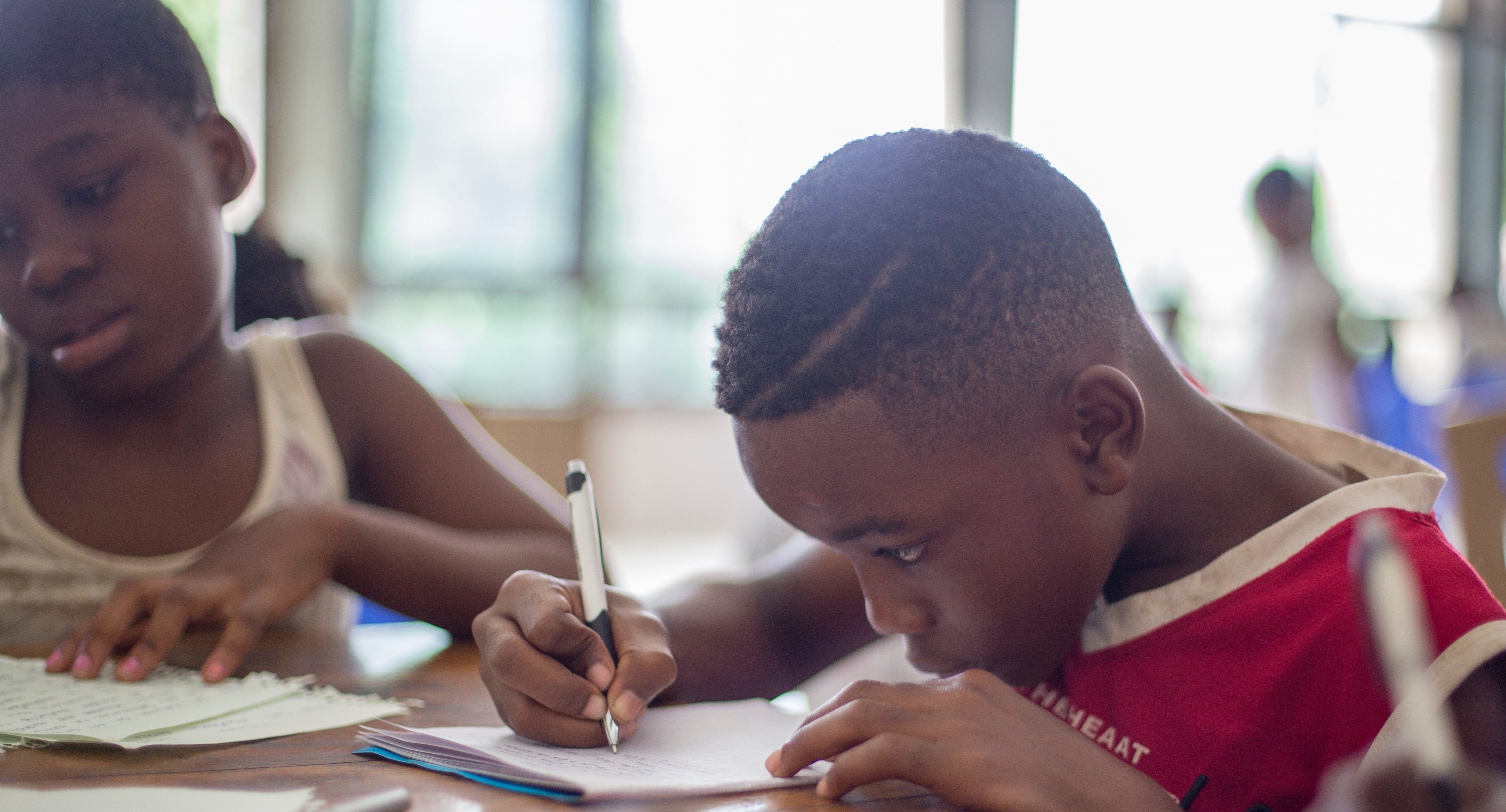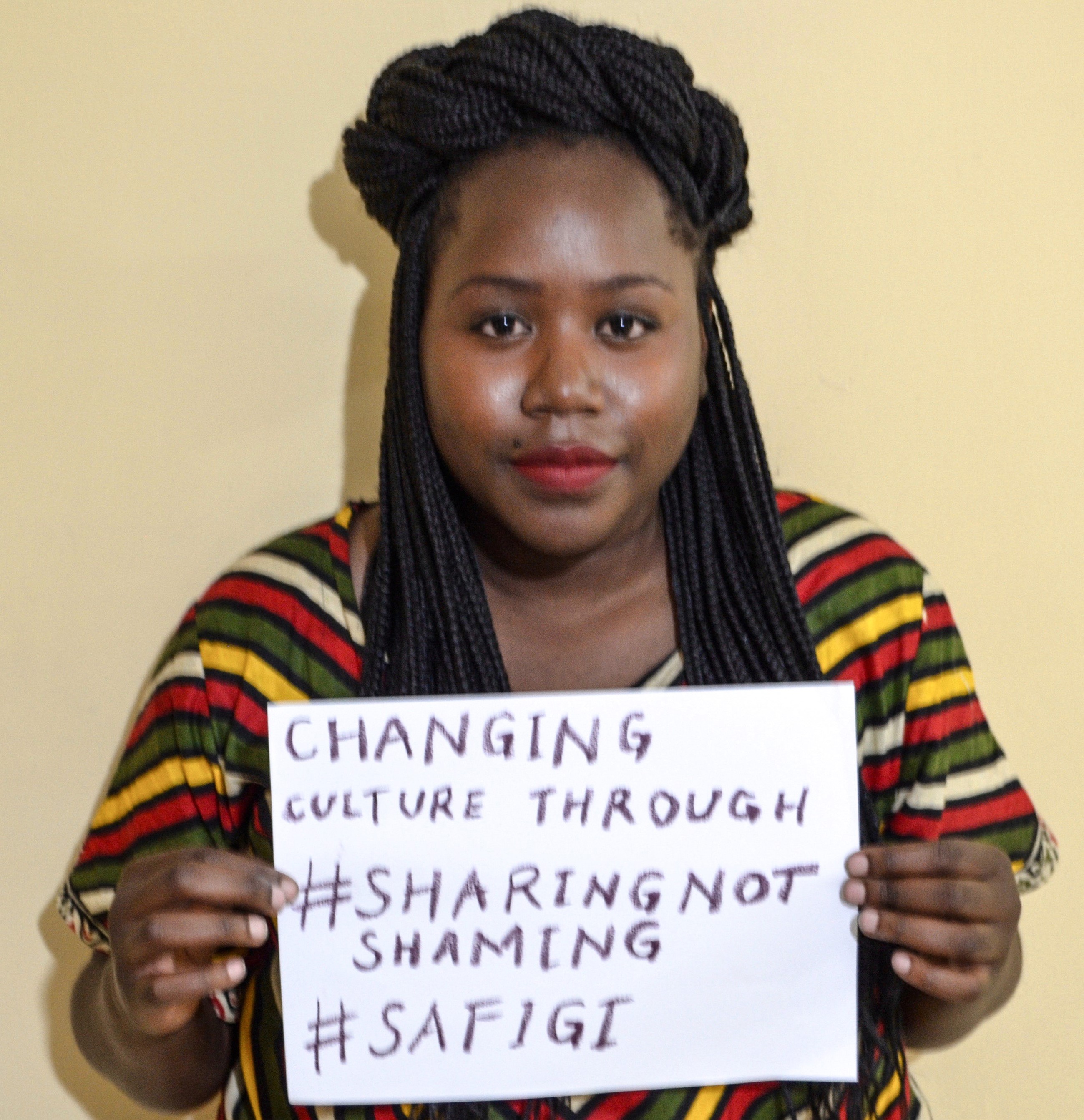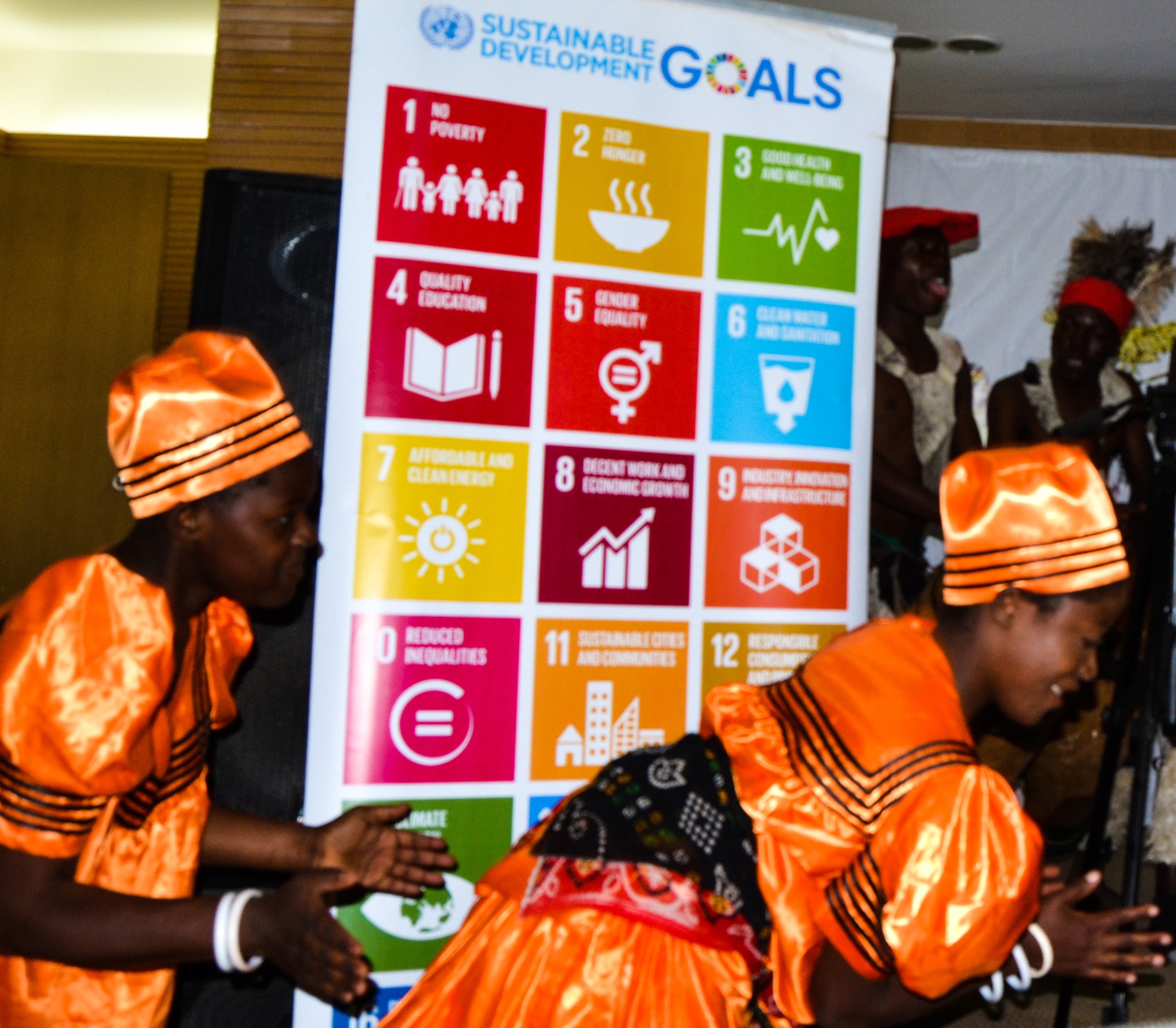The global south is a tapestry of interlocked cultures, customs, and distinct ways of life, making for a wealthy living. Wealth, however, is not a word associated with the developing world. Inequality in the region is deeply entrenched in the system. This is witnessed in the quality of education, health institutions, land distribution, practice on gender equality and human dignity, among more. Culture is the fabric woven by social behaviours in given clusters of community, and just how much of it is reinforcing a lifestyle where females can never stand as tall as males without being axed down?
The experiences of being a young black woman, growing up in an African household, one soon realises that womanhood is determined by how well you clean, cook, and wash. An early riser receives praise and is promised a happy married life. A man with many daughters is assured wealth in the future, from the dowry he will receive. The human dignity of a woman is placed on her male custodians; a culture that dictates her life is not her own.
IT IS THE WAY IT IS
There is acceptance of culture that perpetrates inequality by communities that live in them; it is the only way such norms survive and get passed from generation to generation. Any attempt to change negative aspects of the way of living is seen as an attack on the whole tradition. In the Safety Report analysis on ‘Core Issues Affecting Safety of Girls in the Developing World’ 9 in 10 women did not report domestic abuse they experienced.
“Culture is a personal and societal identity which determines the lifestyle and welfare of a particular community. Latin America’s culture of machismo is significant in determining everything from how household duties are divided and how children are raised, to who runs the country and what widespread messages are transmitted in the media. Machismo culture does not necessarily always lead to violence, but it does create the conditions for violence. Endorsing aggression and masculine pride can lead to violence when pride is threatened. Forbidding males to show emotion also leads to violence when no other outlet is available.” (Warwick, 2017)
In the Safety Report research paper titled “‘Silent voices: violence against the female body as a consequence of machismo culture in Latin America’”, Warwick writes about diverse Latin American communities connected by a shared history of colonisation and common cultural practices emphasised by strong family bonds. The prevalent culture of machismo is an archetype of hyper-sexuality and masculine pride.
“The culture of machismo creates an environment which places males above females, and where females are both vulnerable to and dependent on the actions of males.” (Warwick, 2017)
In Egypt, women had greater anxiety and insecurity in reporting sexual harassment they faced. 9 of 10 Egyptian men stated beliefs that women were responsible for sexual harassment incidents because of their clothes or enticing men’s desire. This is according to the study done by Egyptian researcher Heba Elasiouty for the Safety Report titled ‘The psychological effect of mass sexual harassment on girls in Egypt.’
“Women can be subjected to domestic violence from a spouse or parents after learning about the (sexual harassment) incident, since the driving notion is that the harassed attracted her perpetrator. In some cases, women get divorced because of a jealous spouse.” (Elasiouty, 2017)
ROOSTER FOR LOVE
There is a lot people can do for love. This can go as far as killing a cockerel by sitting on it. There is even more that people can do for culture; to avoid stigma, gain acceptance, build on social ranks, and gain an appropriate seat to look down on others as perceived guardians of the tradition.
Mumbi Kashiwa’s book on “Marriage and Traditions from a Christian Perspective” gives insight on problematic norms which upheld by tradition. A twitter thread by @Annhkay shares her feminist perspectives concerning the book.
“Giving the husband the legs and back of the chicken was an invitation for sex. So if you gave/give someone the back it means you want(ed) sex and most women would be raped because of this. Your refusal was seen as playfulness. (Just traditions right?)”
There is no respite on either side of the coin. Unmarried women also face institutional abuse including wage discrimination, emotional abuse, and sexual harassment.
“I have been discriminated at my workplace because of my status as a single, unmarried, and without any children at my age.” 31 year old Zambian woman told SAFIGI in an interview.
Institutional abuse – wage discrimination and outright sexual abuse is perpetrated by of those who believe a woman should not own a seat at the table. Sometimes this is even entrenched in the educational system. Parents, guardians, and educators who have been bred in the patriarchy will instil their biases on children thereby instilling the culture of inequality in young children.
 IN THE PHOTO: KIDS IN CLASSROOM PHOTO CREDIT: SANTI VEDRÍ ON UNSPLASH
IN THE PHOTO: KIDS IN CLASSROOM PHOTO CREDIT: SANTI VEDRÍ ON UNSPLASH
Women do not have agency over themselves in the patriarchal systems, and this is witnessed in her daily way of life.
“In my culture, a woman belonging to one (self) is not celebrated and rarely tolerated. The consensus is that when a girl is born she belongs to her father or her brothers and when she is of age, she is then given away to another man, her husband who is now responsible for her…not having a father, brother or husband in your life to manage your independence was the quickest road to poverty,” writes Kenyan woman, Tessy Aura, in the campaign ‘Sharing Not Shaming’ by Safety First for Girls (SAFIGI).
She asserts that her local language does recognize the ownership of property or the implication of it by women. “I needed to change how I spoke, be less argumentative, and more docile if I ever wanted to get married and not go through the same suffering my mother did.” Tessy’s mother owns multiple properties, is single, and considered an exception to the rule by her relatives.
 IN THE PHOTO: TESSY AURA SUPPORTING SAFIGI OUTREACH FOUNDATION CAMPAIGN PHOTO CREDIT: HADASSAH LOUIS
IN THE PHOTO: TESSY AURA SUPPORTING SAFIGI OUTREACH FOUNDATION CAMPAIGN PHOTO CREDIT: HADASSAH LOUIS
“When a girl reaches puberty, she is kept in the house for seven days where she is taught on how to conduct herself when she gets married and how to keep her body clean.” This lack of agency goes beyond the woman as a person to her physical body.
In SAFIGI Outreach Foundations data analysis on ‘Core Issues affecting Safety for Girls’ we found that while 84 percent of girls had learned personal hygiene during her basic education, only 12 percent females had learned about mental health, 16 percent about emotional safety, and 22 percent about self defence in the same education setting. This presses on the fact that education is not preparing girls for the real world and can create an atmosphere conducive for early marriages as well as Female Genital
Mutilation.
“(Female Genital Mutilation (FGM) is a practice where a girls private parts are cut. It’s believed to preserves a girl’s chastity, making her a more desirable marriage partner, and improving hygiene and fertility.” This is according to an interview done for SAFIGI’s Safety Report. Another stated, “Islam is the religion that practices this type of tradition (FGM) in order for them to prevent their women from sinning.”
The extremities of Female Genital Mutilation even go as far as putting insects in a girls bra to make her breasts bigger, using pegs to stretch the labia, and putting black powder concoction with petroleum jelly to deform a girls private parts in promise of a successful marriage. The promises do not hold because the shape of a woman’s private part is never an ingredient to a happy, successful or long last marriage. The
consequences are beyond physical and also have psychological effects on the girl. (SAFIGI, 2017).
DOUBLE-EDGED SWORD
Religious spaces have made home in rich cultures. Spirituality is not far removed from communities that embrace (or attempt to) their authenticity, regardless of whether it is oppressive or not. Even Western-led religions have been welcomed to cement the gender hierarchy. In these religious spaces, a woman is hardly allowed to be seen or heard.
Having learned at a girls-only boarding school in a small town in Zambia, the headmistress, a catholic nun, always chanted ‘a woman must be seen and not heard.’ This was a resounding message taught to over 300 young girls for at least five years of their formative years. If a woman is to stand up for herself in a highly patriarchal society, there will be a lot of unlearning to do. We are more than center-pieces or florae; we have analytical brains and must speak out for our rights and dignity. To do so, we must be heard.
A good woman is supposed to be submissive, even when she is trapped in a marriage sealed with a high dowry. A 47 year old wife and grade 3 dropout told SAFIGI in an interview, “When I try to leave my husband because he beats me, he says I should pay back the lobola (dowry or bride price) to him. But my family is poor and we already used the money so I’m just staying in this marriage but not happy.”
There is also a tendency to mix and match tradition and culture to reinforce the status
quo.
“In my tradition (Female Genital Mutilation) is not recommended as it is against God. Moreover my country is governed under Democracy and it is a Christian Nation, thus our traditional is as well based on Christianity as we fear and follow God’s covenant.” A 23 year old male respondent from Zambia stated.
The latter perspective is skewed for two reasons. First, most ethnic traditions are not based on popular religion. Second, the extent of Female Genital Mutilation cannot be fully known especially to males because of the secretive, diverse, and gendered nature of the practice. It is important to note that Female Genital Mutilation precedes both Islam and Christianity.
Neither culture nor religion is bad when embraced with the perspective of equal human dignity for both genders. Norms, philosophies, and truths that work have been manipulated to support the glass-ceiling archetype thereby fortifying inequality.
 IN THE PHOTO: AFRICAN TRADITIONAL DANCE IN A SDG’S RELATED CEREMONY PHOTO CREDIT: HADASSAH LOUIS
IN THE PHOTO: AFRICAN TRADITIONAL DANCE IN A SDG’S RELATED CEREMONY PHOTO CREDIT: HADASSAH LOUIS
PAINS OF DIFFERENCE
Persons living with disabilities face even more attacks on their human dignity. 1 in 10 Children born with disabilities were neglected by their birth mothers, according to the Safety Report by Zambian youth led non profit SAFIGI Outreach Foundation. The social and emotional stages of development children go through play a crucial part of growth and development (Hagen and Smith, 2003).
Many tend to believe that a child with severe physical disabilities is dormant thus harsh comments or verbal attacks are often said in front of children without realising the effects of these words on the child‘s feelings. 75 percent of parents interviewed believed that children with severe disabilities do not have the ability to play and 8 in 10 parents did not find child play to be of much importance (Shikaputo, 2017). This violates the child’s right to play. Furthermore parents could not communicate effectively with their children adding to the child’s feelings of alienation in society.
“Strong mystical explanations with regards to the causes of disability are still very dominant in almost all communities whether rural or urban. These myths have greatly made people with disability, especially the children, vulnerable to discrimination, verbal or physical attacks.
Parents having children with disabilities are often blamed for their child‘s condition more especially the mothers. They are also at higher risk of social and economic deprivation if compared to their counterparts as most are unable to seek unemployment due to the care-taking task. Thus there is a strong link between poverty and disability.”
‘Disability is caused by witchcraft’, ‘Disability is a result of unfaithfulness’, and ‘Disability is caused by attempted abortion’ were some of the common myths found in our interviews. The worst one being ‘Disabled people are not human.’ This is based on the study ‘Psychosocial challenges faced by parents raising children with physical disabilities in the Oshana region Namibia’ by Misumbi Shikaputo, featured in the Safety Report.
WHAT THEN?
In light of the different facades cultivated by tradition to support the foundations of society, it may appear tradition is forlorn and a harbinger of pain and inequality only. Culture is a representation of the values held by people living in a society, and communities are made of people who are both good and bad. When persons in leadership want to maintain an oppressive hierarchy, a culture built on outdated and harmful principles will be used to sustain the imbalance.
Cultures and traditions are an imprint of our history and futures. By recognising harmful practices in our tradition, eliminating them, and practising traditions that embraces human dignity for all, the wealth of our traditions will improve the socio-economic conditions of grassroots communities thereby increasing the Social Progress Index of developing nations.
“For the present it is impossible for a member of the tribe to imagine an initiation without clitordectomy (FGM). Therefore, the abolition of the surgical element in this custom means to the Gikuyu the abolition of the whole institution,” Jomo Kenyatta, first president of Kenya is quoted saying in support of FGM. This is expounded in the report by Dr. Ashenafi Moges on the tradition behind FGM.
Getting rid of a repressive aspect of culture should not be a threat to tradition and customs. Culture, just like people, should be progressive and respond to the needs of the generation performing the norms. This is especially true if we are to achieve gender equality and equity in our context, without facing discrimination or being ostracised for demanding our inalienable human rights and human dignity.
Living by the standards of yesterday, well meaning culture and religion will become a double edged sword – if the woman does not fall by tradition, she will fall by the apple.



 IN THE PHOTO: KIDS IN CLASSROOM PHOTO CREDIT:
IN THE PHOTO: KIDS IN CLASSROOM PHOTO CREDIT:  IN THE PHOTO: TESSY AURA SUPPORTING SAFIGI OUTREACH FOUNDATION CAMPAIGN PHOTO CREDIT: HADASSAH LOUIS
IN THE PHOTO: TESSY AURA SUPPORTING SAFIGI OUTREACH FOUNDATION CAMPAIGN PHOTO CREDIT: HADASSAH LOUIS IN THE PHOTO: AFRICAN TRADITIONAL DANCE IN A SDG’S RELATED CEREMONY PHOTO CREDIT: HADASSAH LOUIS
IN THE PHOTO: AFRICAN TRADITIONAL DANCE IN A SDG’S RELATED CEREMONY PHOTO CREDIT: HADASSAH LOUIS





